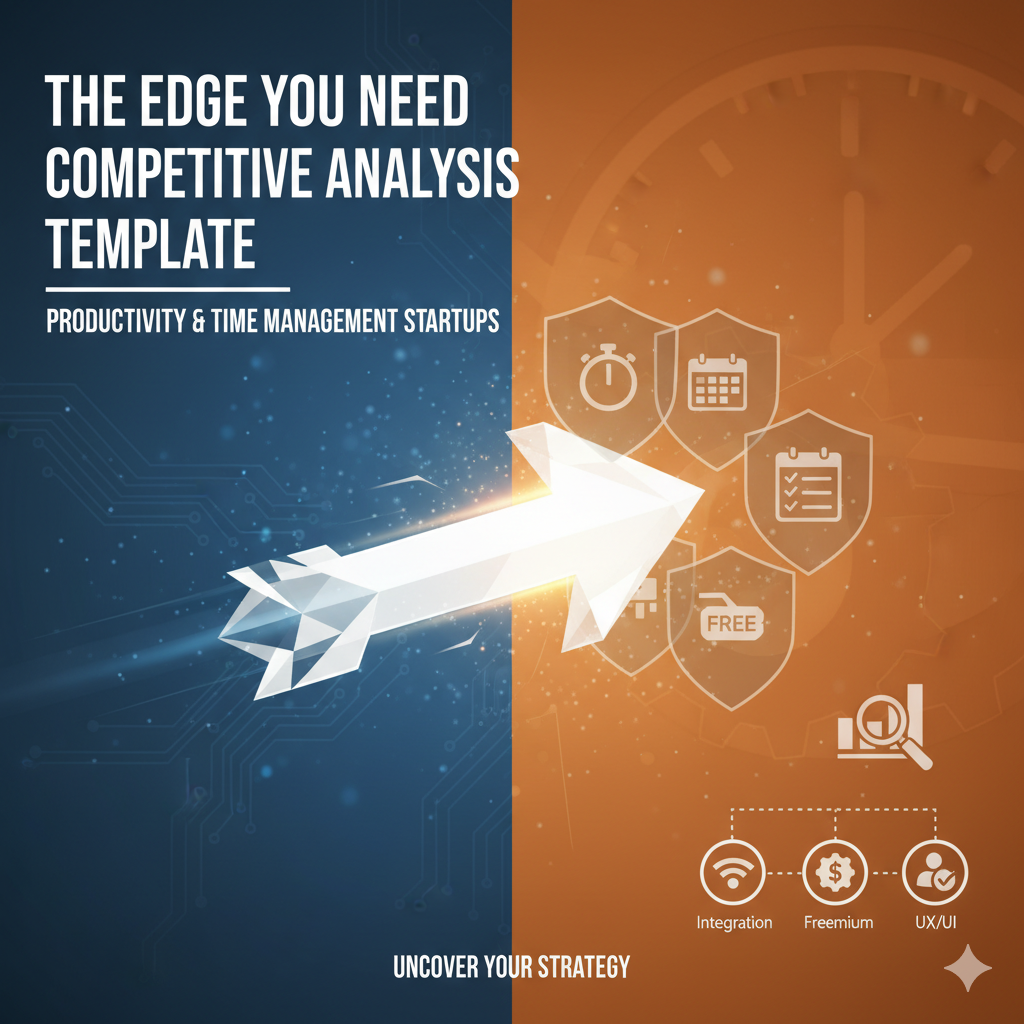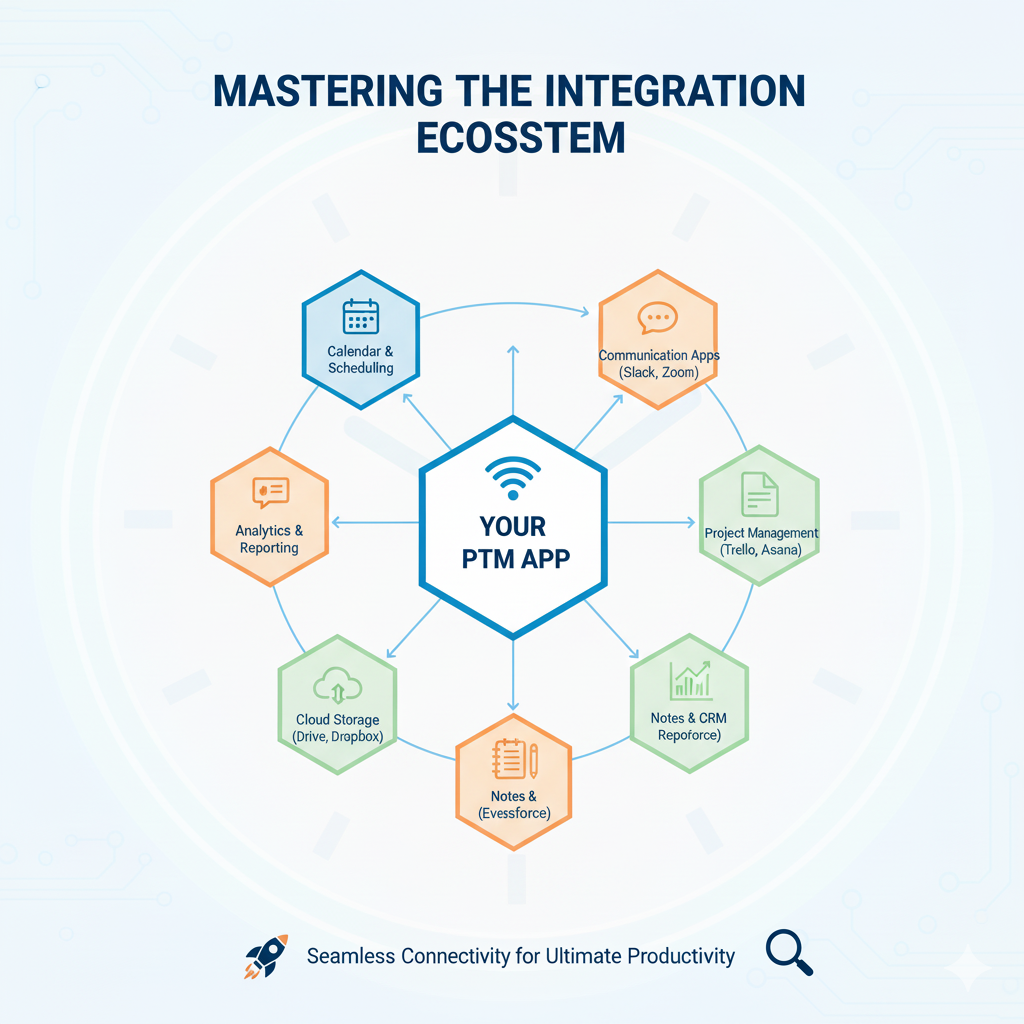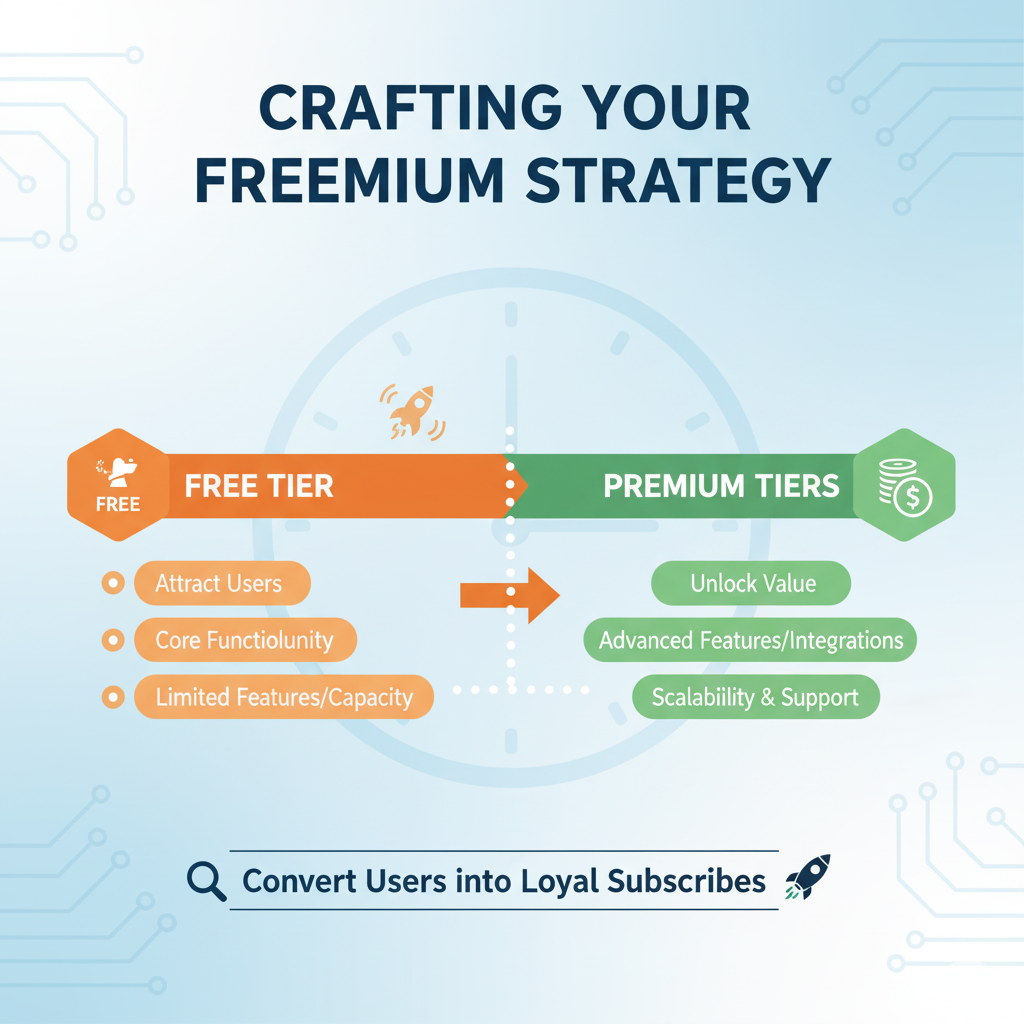
From minimalist to-do lists to all-in-one project management suites, entrepreneurs launching a new PTM solution face intense competition from established giants and nimble newcomers alike.
To succeed, you can’t just build a better mousetrap; you must strategically position your product to capture a specific segment of the market.
A deep, structured competitive analysis is the blueprint for this positioning.
It moves you beyond simply listing features and helps you understand the why behind your competitors’ success—or failure.
This template is specifically designed to help PTM startups and entrepreneurs dissect their rivals and find their unique competitive advantage.

The Critical Need for Deep Analysis in the PTM Market
The PTM market is unique because the product is not just a tool; it is a system that integrates deeply into a user’s daily habits and professional workflow.
Switching costs are high, not in terms of money, but in terms of the time and effort required to migrate data and retrain habits.
This means that early adoption and retention are paramount, making a precise understanding of the competitive landscape non-negotiable.
Your analysis must go beyond surface-level feature comparison to uncover the emotional and psychological drivers behind user choice.
Are users choosing a competitor for its simplicity, its robustness, or its integration into a specific ecosystem (like Google or Microsoft)?
Answering these questions is the first step toward building a product that not only competes but dominates its niche.
Phase 1: Identifying Your PTM Rivals and Segmenting the Market
In the PTM space, competition is often layered.
You need to identify three categories of competitors:
- Direct Competitors: Offer a similar core solution (e.g., another task manager if you are building a task manager, or another time-blocking app if you are building one). Examples: Todoist, TickTick, Microsoft To Do.
- Indirect Competitors: Solve the same user problem but with a different product type (e.g., a note-taking app like Notion or a calendar app like Google Calendar, which users often use for task management).
- Substitute Competitors: Low-tech or non-digital solutions that users default to (e.g., pen and paper, sticky notes, or even just a spreadsheet). Understanding why users stick to these can reveal friction points in digital solutions.
Deep Dive: PTM Market Segmentation
Before you analyze, you must segment.
The PTM market is not monolithic; it is fractured into several key segments, and your product must choose one to win.
Analyze your competitors based on these four critical dimensions:
1. Target User (B2C vs. B2B):
Is the competitor focused on the individual user (B2C), prioritizing personal productivity, habit tracking, and minimalist design?
Or are they focused on teams and businesses (B2B), prioritizing collaboration, project management features, and enterprise-level security and compliance?
The feature set, pricing, and marketing language will be vastly different between these two.

2. Core Methodology (Task vs. Time):
Does the app focus on Task Management (e.g., GTD, Kanban, simple to-do lists), where the primary unit is the task?
Or does it focus on Time Management (e.g., time-blocking, Pomodoro, calendar integration), where the primary unit is the time slot?
Many apps attempt both, but their core design philosophy usually leans heavily toward one.
3. Platform Focus (Mobile vs. Desktop/Web):
A mobile-first app (like a habit tracker) will prioritize quick capture and notifications.
A desktop/web-first app (like a complex project manager) will prioritize screen real estate, deep filtering, and complex data visualization.
Understanding this focus reveals the competitor’s intended user context—are they targeting the user on the go or the user at their desk?
4. Integration Strategy (Open vs. Closed Ecosystem):
Does the competitor aim to be an open hub, integrating with hundreds of third-party tools (e.g., Zapier, IFTTT)?
Or do they aim to be a closed, all-in-one solution, keeping users within their walled garden (e.g., Notion, which has its own database, notes, and task features)?
Your choice here will define your development roadmap and your barrier to entry.
Phase 2: The PTM Competitive Analysis Template
Once you have identified your top 5-7 rivals, use the following structured template to gather and analyze data.
This template focuses on the critical differentiators in the Productivity and Time Management market.
| Category | Analysis Point | PTM-Specific Questions to Answer |
|---|---|---|
| Product & Feature Set | Core Value Proposition | What is the single most important problem they solve? (e.g., “Team collaboration,” “Deep focus,” “Simple task capture”). |
| Key Features | Do they offer: Task management, Calendar integration, Habit tracking, Focus/Pomodoro timer, Note-taking, Project management (Kanban/Gantt), Cross-platform sync, Offline mode? | |
| Integration Ecosystem | Which third-party tools do they integrate with? (e.g., Slack, Zapier, Google Workspace, GitHub). A strong ecosystem is a major barrier to entry. | |
| UX/UI and Onboarding | How steep is the learning curve? Is the design minimalist or feature-rich? How quickly can a new user achieve their first “win”? | |
| Monetization Strategy | Pricing Model | Is it Fremium, Subscription (monthly/annual), or One-time purchase? What are the price points? |
| Freemium Strategy | What is the key feature locked behind the paywall? (e.g., “Unlimited projects,” “Advanced filters,” “Collaboration features”). This reveals their perceived value. | |
| Target Customer | Are they targeting individuals (B2C), small teams (B2B/Pro), or large enterprises? Their pricing tiers will confirm this. | |
| Marketing & Positioning | Messaging | What is the core emotional benefit they promise? (e.g., “Peace of mind,” “Total control,” “Unstoppable momentum”). |
| Acquisition Channels | Where do they get most of their users? (e.g., App Store Optimization (ASO), Content Marketing (SEO for “productivity hacks”), Paid Social, Referrals). | |
| Review Analysis | What are the most common complaints (Weaknesses) and praises (Strengths) in App Store and Capterra reviews? Look for patterns in customer service and bug reports. | |
| Technology & Performance | Speed and Reliability | How fast is the app? Are there frequent sync issues? In PTM, reliability is a core feature. |
| Platform Focus | Are they mobile-first, desktop-first, or web-first? This indicates their primary user context. | |
| Data Security/Privacy | Do they emphasize security or privacy features? This is a growing concern for professional users. |
Deep Dive: Analyzing Competitor Marketing and Acquisition
The PTM market is driven by content and search intent.
Users are actively searching for solutions to problems like “how to stop procrastinating” or “best project management software for small business.”

Your competitive analysis must include a forensic look at how your rivals capture this intent.
1. Content Strategy and SEO:
Use tools to analyze the top-performing keywords for your competitors.
Are they ranking for broad terms like “to-do list” or long-tail, high-intent terms like “GTD software for Mac”?
Analyze their blog content—is it focused on product tutorials, or is it thought leadership on productivity principles?
A competitor with a strong SEO moat is a significant challenge, but it also reveals the exact content topics that drive traffic and conversions.
2. App Store Optimization (ASO):
For mobile-first PTM apps, the App Store and Google Play Store are the primary acquisition channels.
Analyze their app titles, subtitles, keywords, and screenshots.
How do they use visual elements to convey their core value proposition in seconds?
The language used in their app store descriptions often provides the clearest, most distilled version of their marketing message.
3. Social Proof and Reviews:
In a market where trust and habit are key, social proof is paramount.
Systematically read the 1-star and 5-star reviews for your competitors on platforms like Capterra, G2, and the app stores.
The 1-star reviews reveal the unmet needs and pain points that your product can solve.
The 5-star reviews reveal the delight moments and core features that you must at least match.
Look for patterns: “Great app, but the sync is terrible” is a massive weakness you can exploit by prioritizing reliability.
Phase 3: Synthesizing Insights into Strategy
The raw data is useless without interpretation.
Your goal is to identify the White Space—the unmet need or underserved segment where your startup can thrive.
The Feature Gap Analysis: Beyond the Checklist
Compare your product’s planned features against your competitors.
Must-Haves: Features everyone has (e.g., basic task creation).
You must match these.
Differentiators: Features few or none have.
This is your innovation zone.
For example, perhaps no one has truly cracked AI-driven task prioritization based on energy levels—that could be your niche.
Over-Engineering: Features that are common but often cited as confusing or bloated in reviews.
You can win by offering a simpler solution.
The feature gap is not just about adding more; it’s about subtracting complexity where competitors have failed.
If a competitor’s advanced features are confusing, your gap is to offer a simpler, more intuitive version of that feature, or to remove it entirely and focus on a streamlined experience.
This is the essence of finding a “Blue Ocean” strategy in a crowded market.

The Positioning Matrix: Visualizing Your Niche
Plot your competitors on a 2×2 matrix using two key axes relevant to the PTM space, such as:
- Axis 1: Simplicity vs. Complexity (Minimalist vs. All-in-One)
- Axis 2: Individual Focus vs. Team Collaboration
By visualizing where your competitors sit, you can clearly see the empty quadrant where your product can be positioned.
For instance, if the market is saturated with complex, team-focused tools, you might position yourself as the “Simple, Deep-Focus Tool for Individual Knowledge Workers.”
Other useful axes for the PTM market include:
- Cost: Free/Low-Cost vs. Premium/Enterprise
- Methodology: Structured (GTD/Kanban) vs. Freeform (Note-Taking/Mind Mapping)
- Integration: Open Ecosystem vs. Walled Garden
The goal is to find a combination of axes where your product can be the undisputed leader in that specific quadrant.
Pricing and Value Alignment: The Monetization Strategy
If all your competitors offer a $10/month premium tier, you have three options:
- Undercut: Offer a similar feature set for $5/month (a difficult, race-to-the-bottom strategy that often leads to unsustainable business models).
- Match and Differentiate: Offer the same price but with a clearly superior, unique feature (e.g., “The only one with true end-to-end encryption”). This is a strong strategy for a direct competitor.
- Premium: Charge $20/month but target a high-value niche (e.g., “The Executive Time Management Suite”) with specialized features and white-glove support. This requires a significant value-add that justifies the price.
Crucially, analyze the Freemium Wall.
What is the point at which a competitor forces a user to pay?
Is it a feature wall (e.g., “Kanban boards are premium”) or a usage wall (e.g., “After 5 projects, you must pay”)?
Your freemium strategy should be designed to allow users to experience your core differentiator for free, but lock the features that enable deep, habitual, or collaborative use.
Phase 4: Operationalizing Your Competitive Advantage
A competitive analysis is not a static report; it is a living document that drives your product and marketing roadmap.
The final phase is to translate your insights into concrete, measurable actions.
1. Product Roadmap Prioritization
Use the Feature Gap Analysis to prioritize your development sprints.
If your analysis shows that all competitors have poor mobile offline sync (a common PTM pain point), then flawless offline sync becomes a top-priority feature, not just a nice-to-have.
If a competitor is winning on a feature you cannot match (e.g., a 10-year head start on integrations), focus on a feature they cannot easily copy (e.g., a proprietary AI algorithm).
2. Marketing Message Refinement
Your marketing copy should directly address the Weaknesses of your competitors and highlight your Differentiators.
If Competitor A is known for being “too complex,” your message should be: “Product X: All the power, none of the clutter.”
If Competitor B is known for “poor customer support,” your message should emphasize: “Product X: Productivity backed by 24/7 human support.”
This is called “Contrastive Positioning,” and it immediately tells the user why they should switch.

3. Building a Competitive Moat
The ultimate goal is to build a moat—a sustainable competitive advantage that is difficult for rivals to cross.
In the PTM space, moats are often built on:
- Data Network Effects: The more users use your product, the smarter your AI prioritization becomes (e.g., “This task usually takes people like you 30 minutes”).
- Ecosystem Lock-in: Deep, seamless integration with a specific platform (e.g., being the best task manager for the Apple ecosystem).
- Habit Formation: A superior UX/UI that makes your product the default, most comfortable tool for the user’s daily routine.
Your competitive analysis should identify which moat your competitors are building and which one you can build faster and better.
Conclusion: Your Competitive Advantage is Actionable
In the Productivity & Time Management sector, the market rewards clarity and execution.
By using this structured template, you transform vague competitive awareness into an actionable strategy.
You will stop chasing features and start building a product that solves a specific, painful problem for a clearly defined audience.
This is how you move from being another PTM app to being the essential PTM app for your user.
